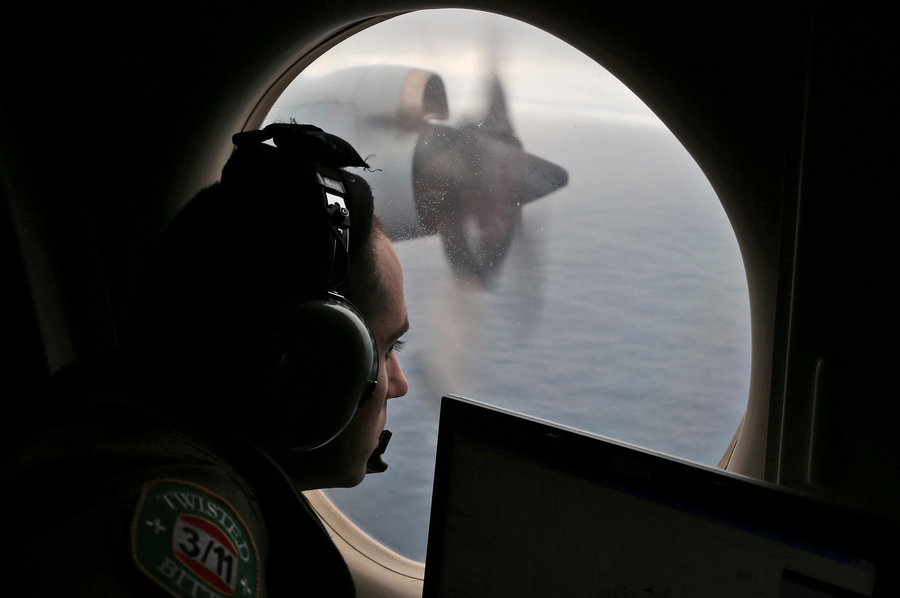Investigators have "high degree of confidence" that debris belongs to Boeing 777
Loading...
| WASHINGTON
Air safety investigators have a "high degree of confidence" that a photo of aircraft debris found in the Indian Ocean is of a wing component unique to the Boeing 777, the same model as the Malaysia Airlines plane that disappeared last year, a U.S. official said Wednesday.
Air safety investigators — one of them a Boeing investigator — have identified the component as a "flaperon" from the trailing edge of a 777 wing, the U.S. official said.
A French official close to an investigation of the debris confirmed Wednesday that French law enforcement is on site to examine a piece of airplane wing found on the French island of Reunion, in the western Indian Ocean. A French television network was airing video from its Reunion affiliate of the debris.
The last primary radar contact with Malaysia Airlines flight 370 placed its positon over the Andaman Sea about 230 miles northwest of the Malaysian city of Penang. The French island of Reunion is about 3,500 miles southwest of Penang, according to a Google map.
The U.S. and French officials spoke on condition that they not be named because they aren't authorized to speak publicly.
At the United Nations, Malaysian Transport Minister Liow Tiong Lai told reporters that he has sent a team to verify the identity of the plane wreckage.
"Whatever wreckage found needs to be further verified before we can ever confirm that it is belonged to MH370," he said.
The discovery is unlikely to alter the seabed search, said Australian Transport Safety Bureau Chief Commissioner Martin Dolan, who heads the effort. If the find proved to be part of the missing aircraft, it would be consistent with the theory that the plane crashed within the 46,000 square mile search area, he said.
If the debris turns out to be from MH370, it will be the first confirmation that the plane crashed into the Indian Ocean after it vanished on March 8, 2014, with 239 people on board while traveling from Kuala Lumpur in Malaysia to Beijing. A massive multinational search effort of the South Indian Ocean, the China Sea and the Gulf of Thailand was not successful.
It was well understood after MH370 disappeared that if there was any floating debris from the plane, Indian Ocean currents would eventually bring it the east coast of Africa, said aviation safety expert John Goglia, a former member of the U.S. National Transportation Safety Board. But the debris is unlikely to provide much help in tracing the oceans currents back to the location of the main wreckage, he said.
"It's going to be hard to say with any certainty where the source of this was," he said. "It just confirms that the airplane is in the water and hasn't been hijacked to some remote place and is waiting to be used for some other purpose. ... We haven't lost any 777s anywhere else."
A comprehensive report earlier this year into the plane's disappearance revealed that the battery of the locator beacon for the plane's flight data recorder had expired more than a year before the jet vanished. However, the report said the battery in the locator beacon of the cockpit voice recorder was working.
Investigators hope that if they can locate the two recorders they can get to the bottom of what has become one of aviation's biggest mysteries. The unsuccessful search for Flight 370 has raised concern worldwide about whether airliners should be required to transmit their locations continually via satellite, especially when flying long distances over the ocean.
Apart from the anomaly of the expired battery, the detailed report devoted page after page to describing a flight that started off completely normal.
The 584-page report by a 19-member independent investigation group went into minute details about the crew's lives, including their medical and financial records and training. It also detailed the aircraft's service record, as well as the weather, communications systems and other aspects of the flight. Nothing unusual was revealed.
The 777, first introduced into service in 1995, had had an enviable safety record up until Flight 370. The only prior fatal crash was of an Asiana Airlines flight while landing in San Francisco in 2013 that was later attributed by accident investigators to mistakes by the flight's pilots. Two passengers were killed in the crash and a third was run over by a truck.
Four months after the disappearance of Flight 370, another Malaysia Airlines 777 was shot down over rebel-held portion of Eastern Ukraine, killing all 298 aboard.
Hinnant reported from Paris. Associated Press writer Edith Lederer at the United Nations contributed to this report.





